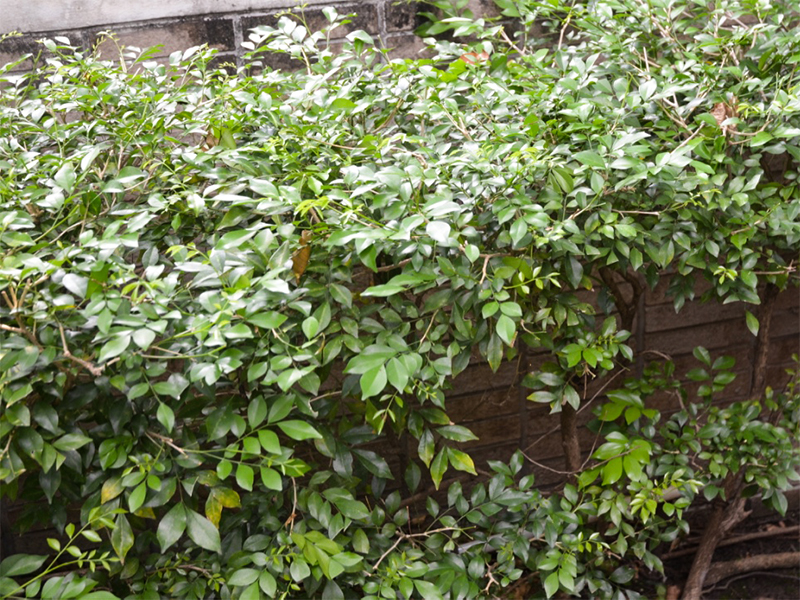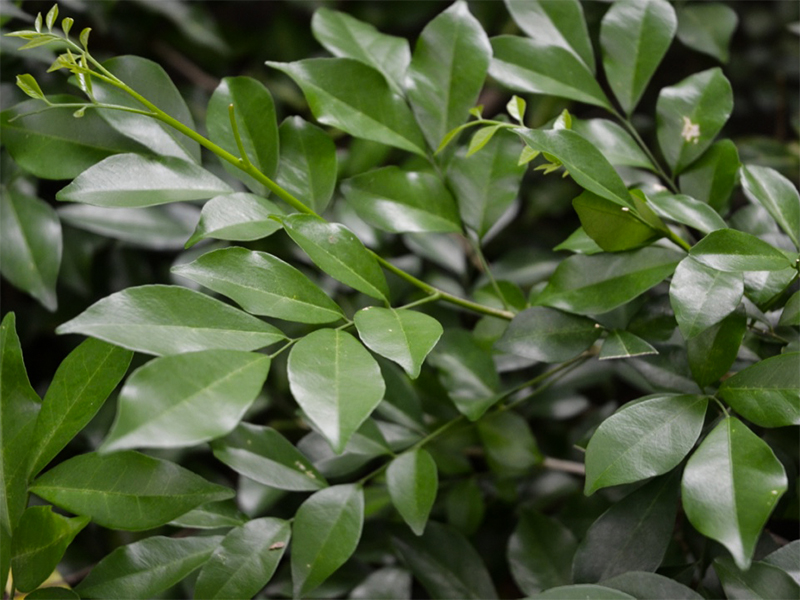| General Description | A bushy large shrub or small tree. |
| ID Characteristic | Distinctive white flowers with petals that fold backward. |
| Shape | Mounding and clumping. |
| Landscape | As a flowering shrub, hedges and borders, urban & city courtyards and gardens, along buildings or walls or as a specimen. |
| Cultivation | Plant in bright shade in moist but well-drained humus-rich soil. |
| Notable Specimens | Kings Park and Botanical Garden, Perth, Australia.
Suan Packkad Palace, Bangkok, Thailand. |
| Habitat | Horticultural origin. |
| Bark/Stem Description | Young stems are thin and either glaborous or with small thin hairs. Older stems are woody, fissured and rough. |
| Leaf Description | Alternately-arranged, simple pinnate leaves measuring 6 - 11 cm long borne on petioles. Glossy leaflets of 3 - 9 measuring between 1.5 - 7 cm in length and 1 - 2.5 cm wide. |
| Flower Description | Terminal clusters of 5 - 8 flowers on the tips of branches. Flowers have 5 petals measuring 10 - 18 mm long that curve backwards and 4 sepals. |
| Fruit Description | Oval to ellipsoid berries that measure 10 - 15 mm long. |
| Colour Description | Bluish-green foliage decorated with small creamy white flowers. Reddish-brown to greyish-brown bark. |
| Texture Description | Medium to rough. |

